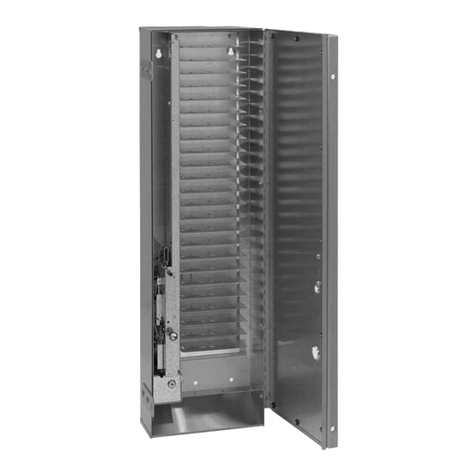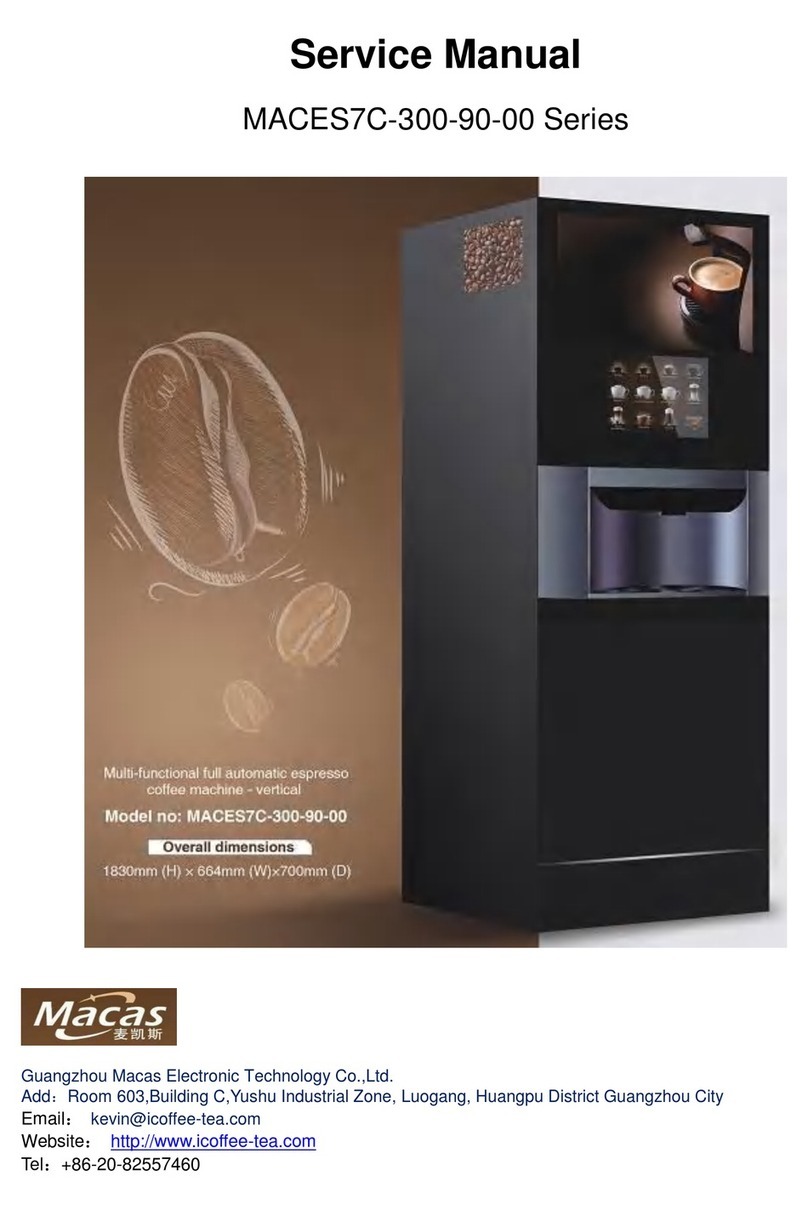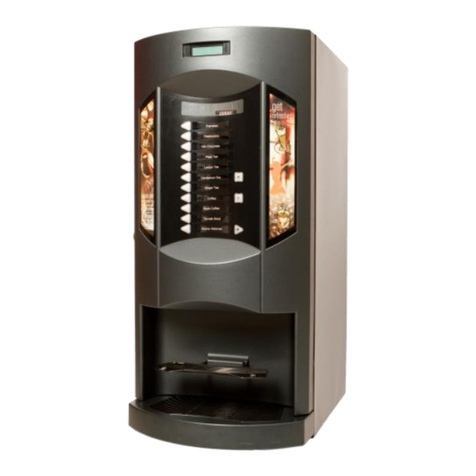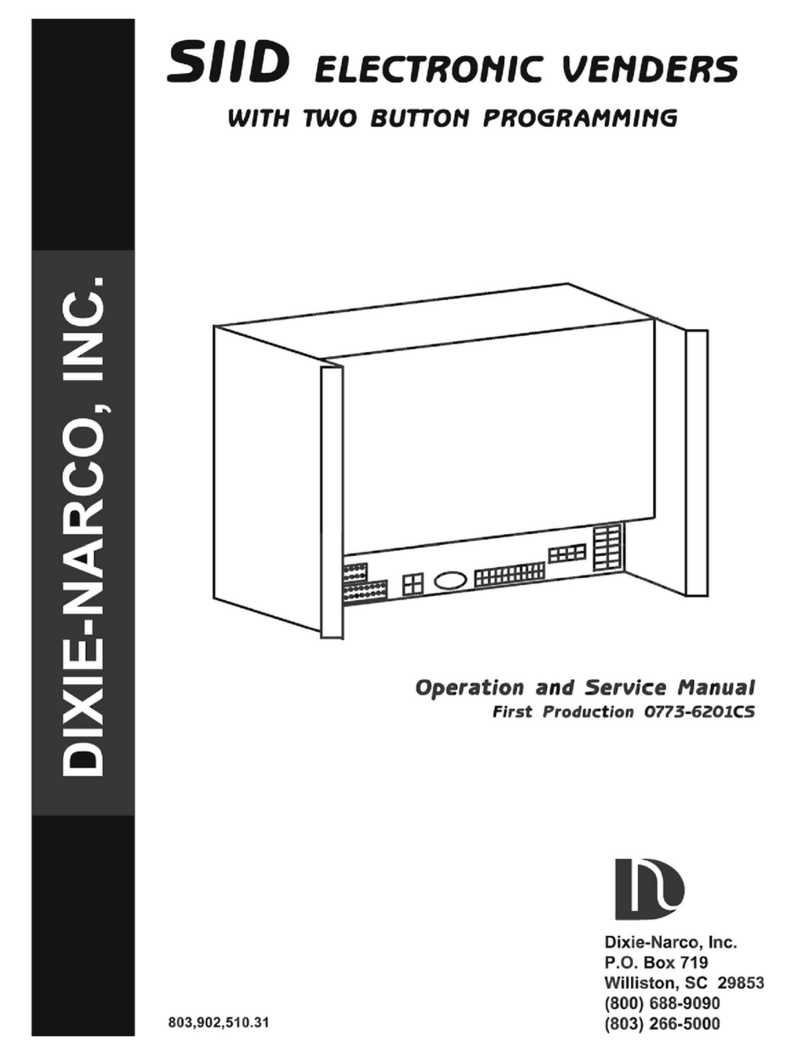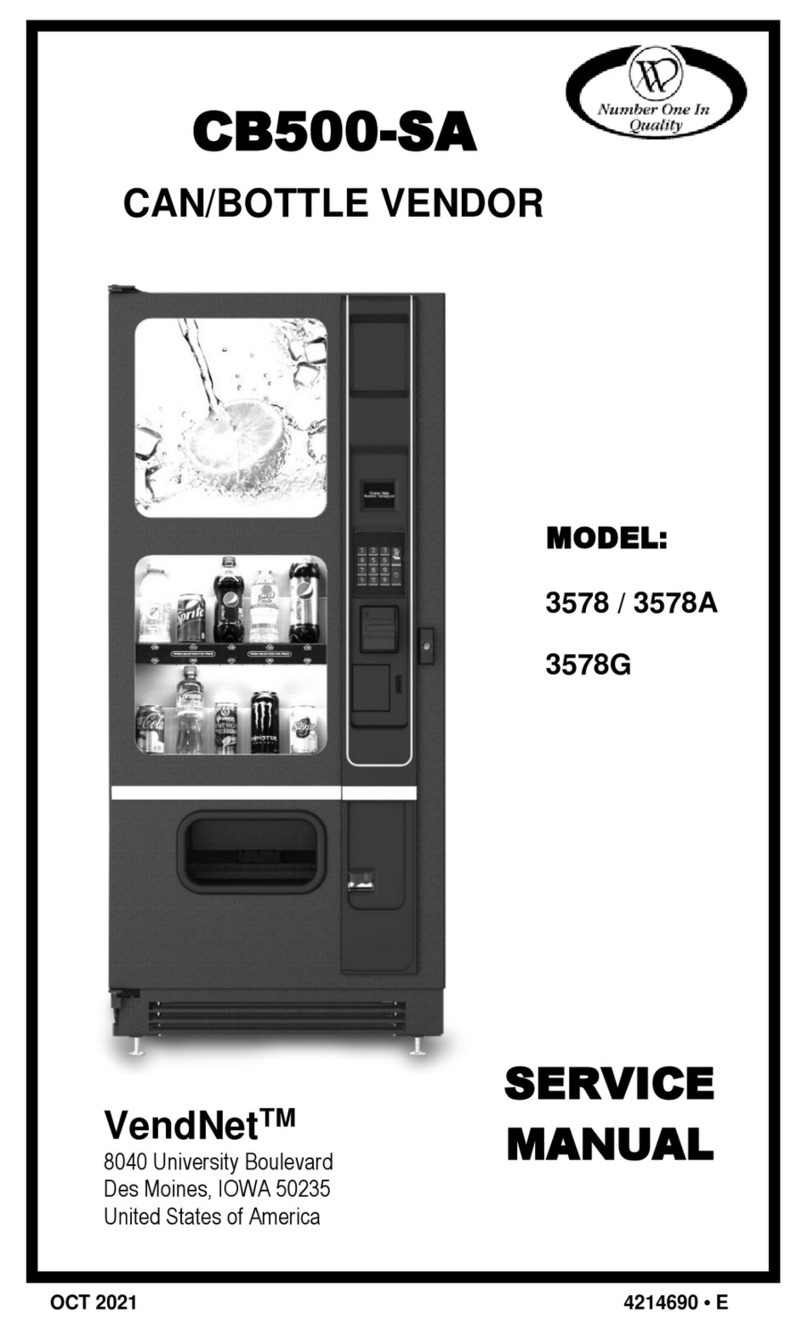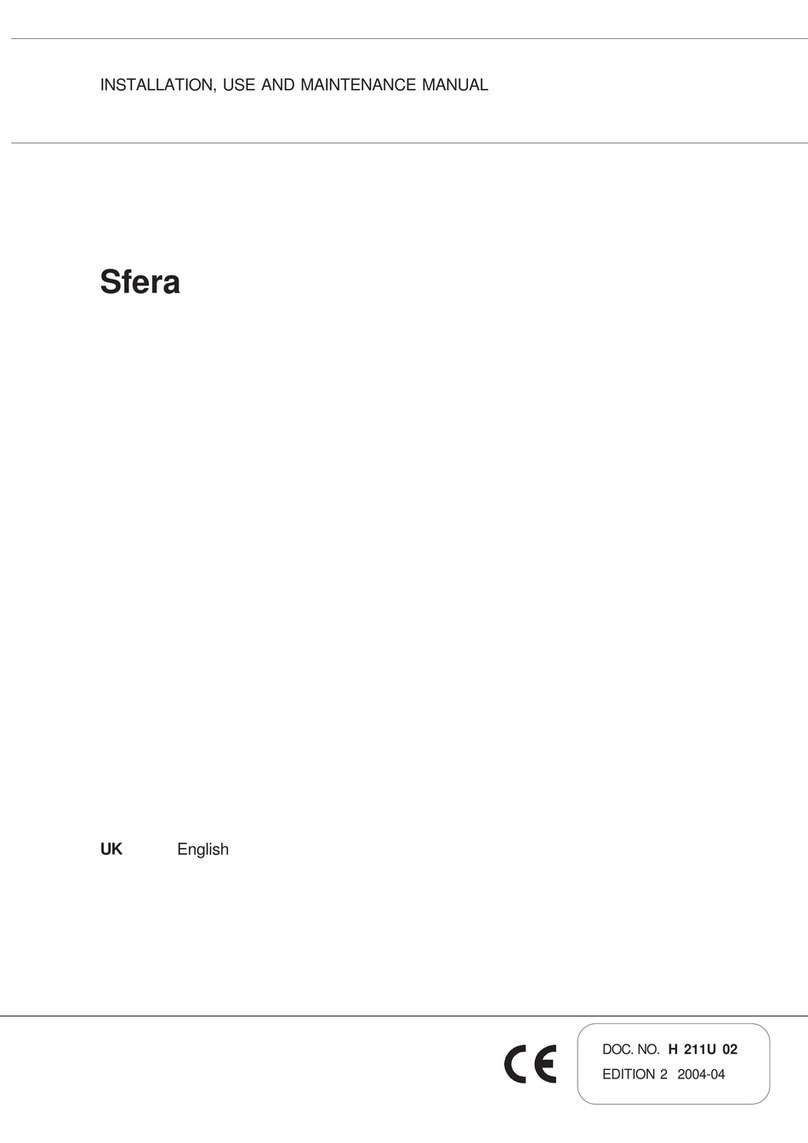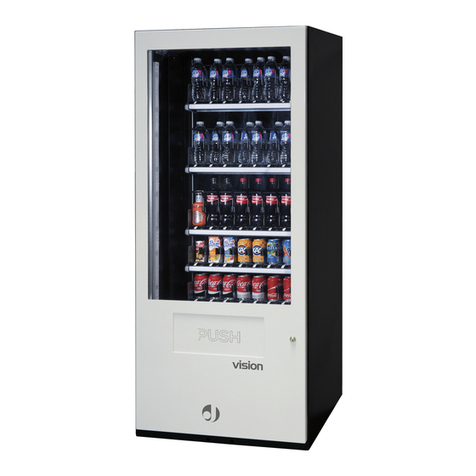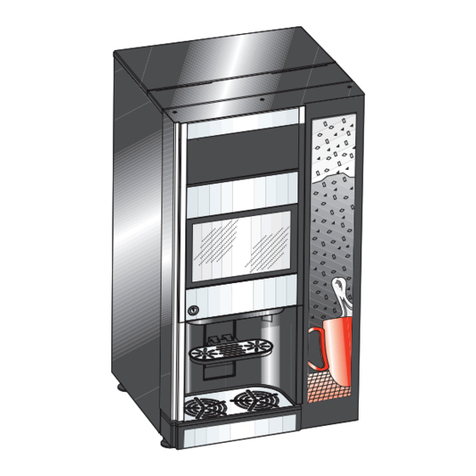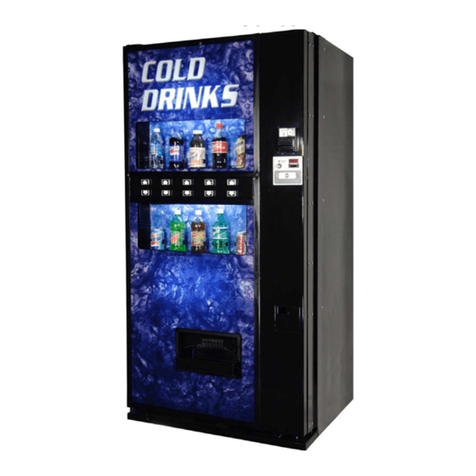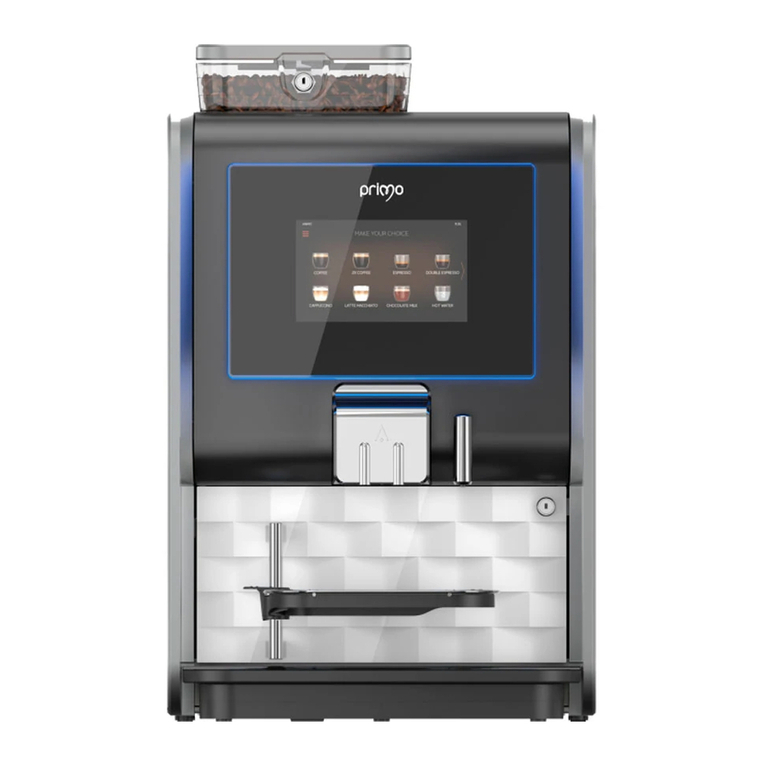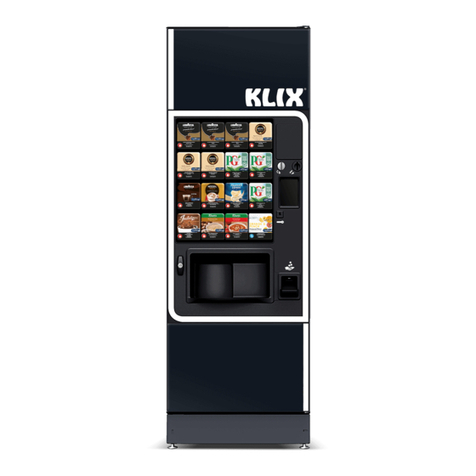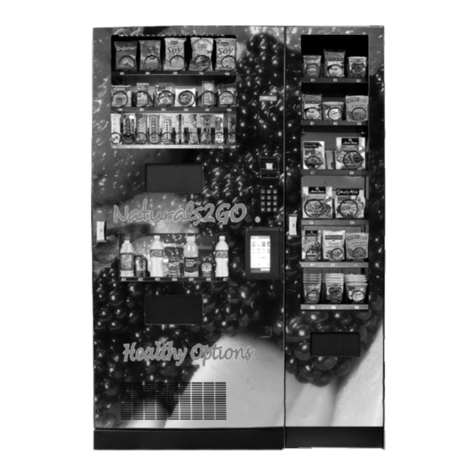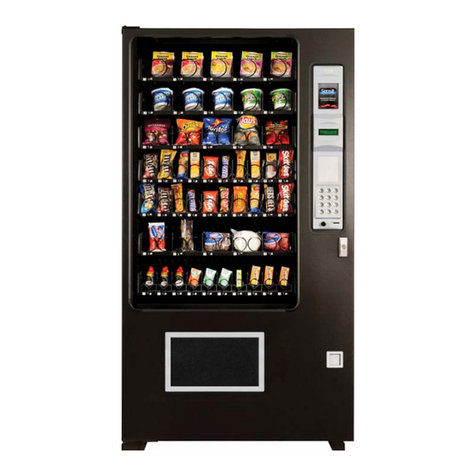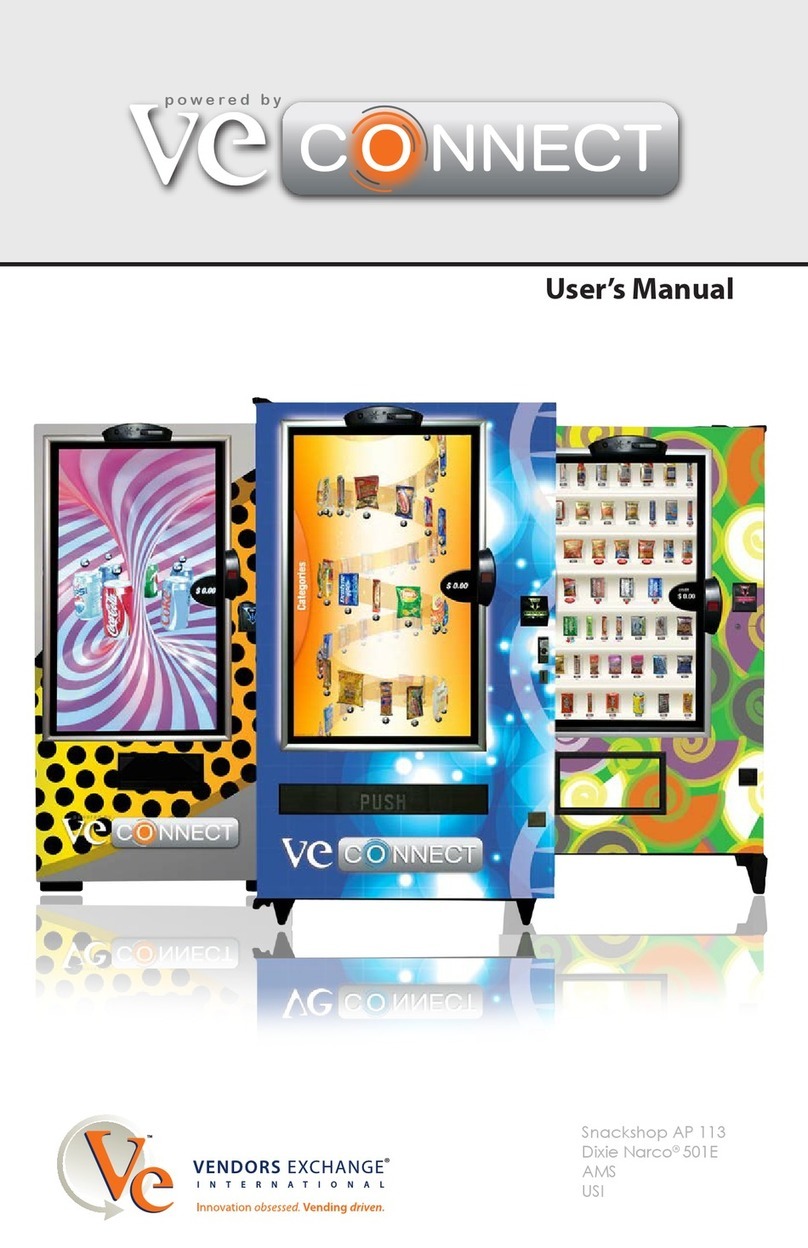Vending-Box COMPANY Model 540
The device together with its package should undergo
recycling.
Illegal utilization is the subject to penalties.
European Union countries
Devices marked with this symbol should not be utilized
together with municipal waste. More information may
be obtained from the producer.
Non-European Union countries
The owner of the device should contact local authorities
in order to obtain information on the appropriate
utilization.
INSTALLATION OF THE DEVICE
9Location of the machine
The machine is not intended to be used outdoor. It must
be located in a dry indoor place and it must not be
moisturized by any water or other liquid drops. If the
machine is equipped with radio communication
systems, all metal objects must be placed in the distance
of at least 1 metre from the machine.
10 First start-up
Before the first start-up, it is obligatory to get familiar
with this manual. If the information included in it is not
precise enough, please contact the producer’s service.
All procedures described in this chapter should
be done with the machine disconnected from the
power supply.
Before starting up the device, you must check technical
condition of the machine, if it has not been damaged
mechanically in transport. In case you find any damage,
it must be assessed if it affects safety and if it might
limit the functioning of the device. If so, any starting-up
procedures should be stopped.
If you are not able to define the device
condition or you have no qualification to assess
if the damage might cause any danger to the
user, contact an authorized
First thing to be done after placing the machine in its
final destination is to level it with the help of four
levelling feet, which are supplied with the device. While
placing the machine vertically, use an appropriate lift.
Do not lift the device with the use of the levelling feet.
Next step is regulation of the left and right door hinges,
which could be moved in transport. To do it, you
should use upper hinges fixed with tree screws each,
two from the top and one accessible from the inside of
the machine. To get access to the inner screws, you
must open the device.
Hinge screws should be only loosened and after
regulating the hinge, they should be screwed so that the
hinge could not be moved during opening the door.
After regulation, the space between the doors should not
be bigger than 3 mm, equal along the door edges. The
outer edges of the doors should fit the contour of the
shell of the machine. After the right door is blocked,
you must check if the sensor of the left door opening
switches after it is closed. You should hear a clear click
of the sensor pins. If after closing the door, the switch is
not on, you must move the tappet of the door sensor
located on the left door so that the sensor is clearly
switched on after the door is closed.
The door opening sensor is one of the elements
responsible for safe work of the machine. In
case it is not switched on after closing the left door,
feeder rotation will not be possible.
The last thing which should be done before starting up
the device is verification of the free feeder rotation. To
do it, you must unlock the drum by pulling the brake rod
away from the feeder and pushing it away from you so
that the rod gets blocked in the gap of the brake shell. In
the picture you can see the view of the brake in the
position blocking the rotation of the feeder (1) and in
the position of the blocking mechanism pulled in (2).
After unlocking the drum, the feeder may be rotated
manually. Give the drum a full turn checking if the
movement is free and no alarming noises come out of
the machine which could mean that the drive
mechanism might be damaged. If you notice
inappropriate work of the feeder, stop the device
starting-up.
If you are not able to define clearly the state of
the feeder’s work, contact an authorized service.
If the condition of the machine is verified, the device is
leveled, door suspension is regulated and the feeder
rotates freely, the machine is ready to be started. More
information on this subject can be found in the chapter:
Starting the device.
11 Starting the device
If the device has been transported or has not worked for
a longer time, follow the procedure described in the
chapter: First Start-up.
In order to start the device, first you must plug it in the
power supply. Connecting the machine with the power
supply of 230VAC should be done when the
main switch is in the 0 position.
The connected device must be laced behind the
ground-fault circuit and the power socket must enable
connection with PE conductor.
After connecting the machine with the power supply
and switching on the machine with the main switch
(position 1), the device will be started.
Switching on the power supply, with the
opening door sensor turned on causes automatic
rotation of the drum in order to set its position.
Remember not to leave protruding elements in the
feeder and to move aside from the feeder after switching
the machine on.
After a short while, the display shows start-up screen
with description of the model of the machine and a
variety of status icons informing about the state of
starting-up.
11.1 ETHERNET
The first one to be started is the
ETHERNET interface. This showed icon
informs about the connection with the net. If
the connection is successful, the icon color
will change from gray to blue.
